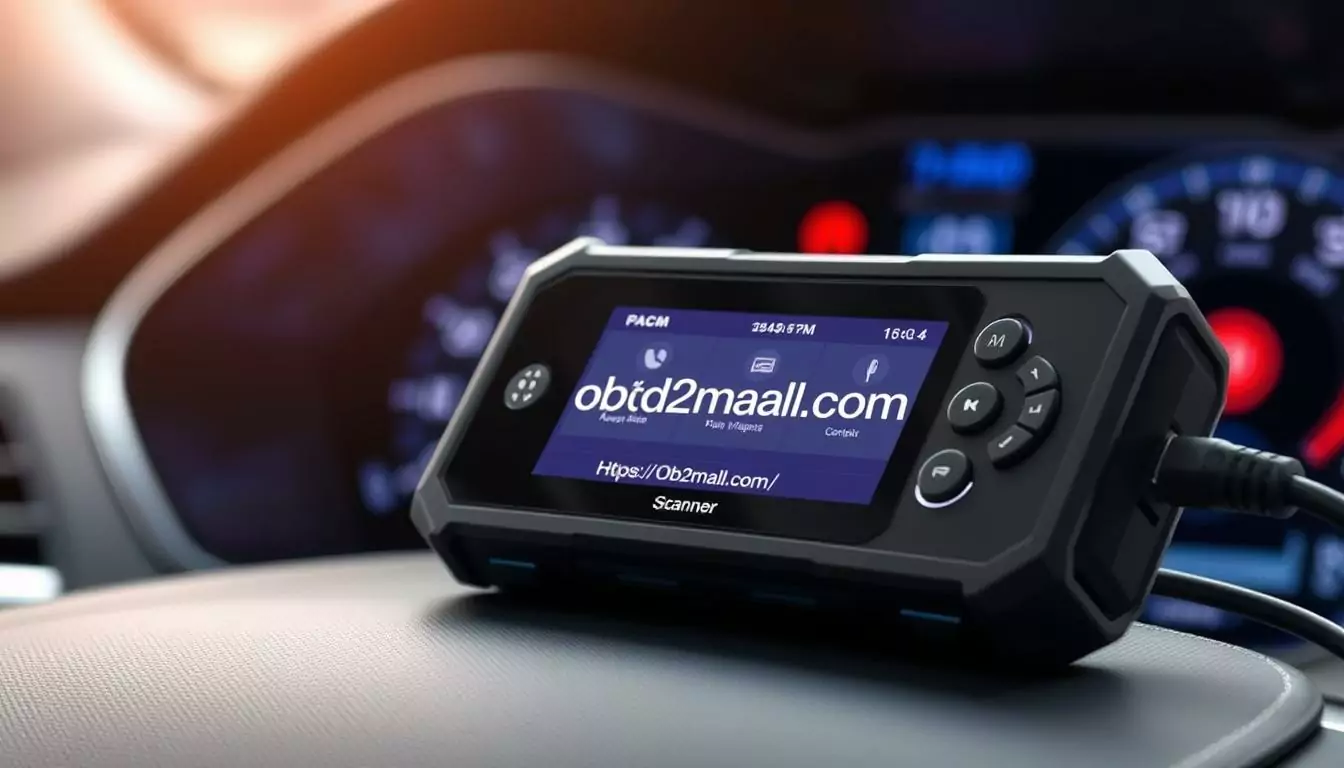As an auto enthusiast, I find OBD scanners essential for my vehicle’s care. By linking an OBD2 scanner to my car’s OBD port, I get a lot of info. This includes error codes, live data, and diagnostic trouble codes. It helps me spot and fix problems fast, making repairs more accurate and cutting down on downtime.
OBD scanners are now a key tool in the auto world. They help me keep an eye on my car’s health and ensure it runs well. I can read and clear codes for the engine and other systems like ABS and airbags. Some scanners even offer Smart Mechanic features. These give me detailed code explanations, repair advice, and predictive analytics for each error code.
Key Takeaways
- OBD scanners help catch problems early, avoiding big repairs.
- Using OBD2 scanners regularly saves money on maintenance.
- OBD2 scanners track real-time data and give accurate mileage reports.
- They offer tools for basic upkeep, emissions checks, and diagnostic history.
- OBD2 scanners help improve car performance and meet emissions standards.
Benefits of Using OBD2 Scanners in Auto Repair
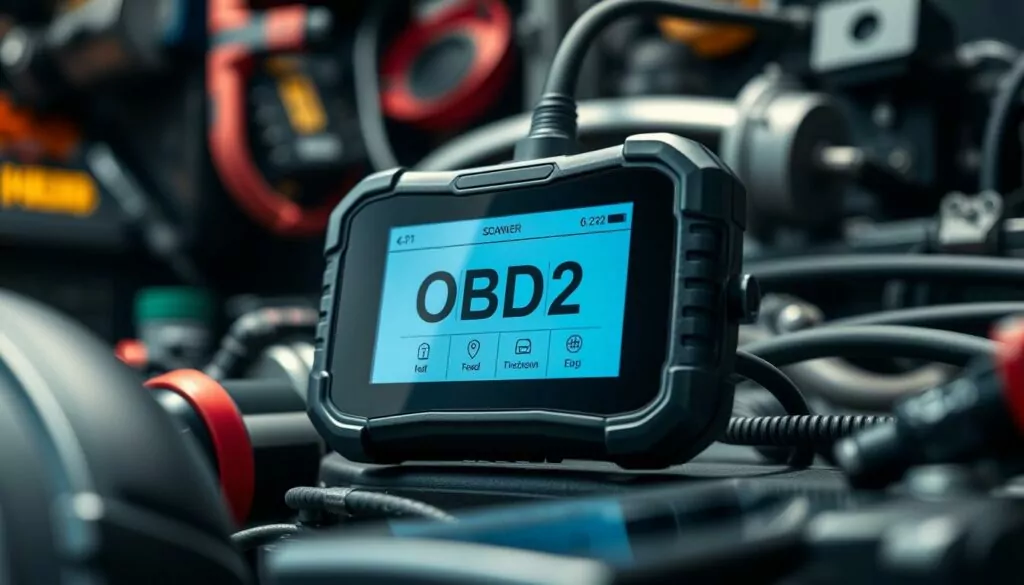
OBD2 scanners are key in auto repair, bringing many benefits. By linking an OBD2 scanner like the ANCEL AD410 to a car’s port, techs quickly find error codes and live data. This makes fixing cars faster and more accurate.
Using OBD2 scanners also cuts down on car downtime. Techs can quickly find and fix problems, getting cars back on the road quickly.
Streamlining the Diagnostic Process
OBD2 scanners give a full view of a car’s health. They help techs find problems fast, making the diagnostic process quicker and more efficient. Regular scans also boost fuel efficiency and prevent unexpected breakdowns, making driving better.
Improving Repair Accuracy
OBD2 scanners, like the ANCEL X7’s, offer advanced features. They help techs pinpoint issues with precision. By checking systems like airbags and ABS, scanners prevent safety risks. This leads to more reliable and accurate repairs, keeping cars safe on the road.
Reducing Vehicle Downtime
OBD2 scanners make fixing cars faster, reducing downtime. They also track a car’s repair history, helping techs make better decisions. This means customers get back on the road quicker, with confidence in the repairs.
In summary, OBD2 scanners are vital in auto repair. They make diagnosing and fixing cars faster, more accurate, and with less downtime. These tools are essential for improving repair services.
Overview of OBD Scanners Specific to Kia Rio 2017
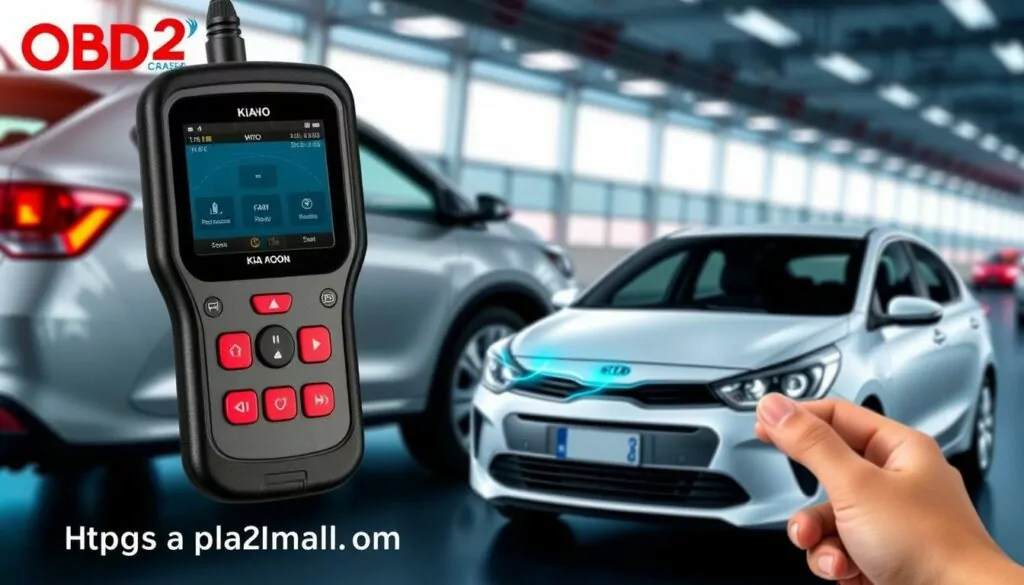
For your 2017 Kia Rio, the right OBD2 scanner is key. These tools have features made just for Kia Rio owners. Knowing about OBD2 scanners for your Kia can help keep your car in top shape.
Location of OBD2 Port in Kia Rio 2017
Finding the OBD2 port in your 2017 Kia Rio is the first step. It’s hidden behind the dashboard or steering column. A quick online search can help you find it fast.
Choosing a Compatible OBD2 Scanner
Not all OBD2 scanners work with your 2017 Kia Rio. They talk to your car’s systems, like the engine and ABS. Picking a scanner made for Kia Rio ensures a smooth experience.
Model-Specific Features and Considerations
Kia Rio 2017 OBD2 scanners have special features for Kia owners. They work with other Kia models too, showing their flexibility. Some scanners are easy to use, even for those not tech-savvy.
The right OBD2 scanner is a big help for your Kia Rio 2017. Knowing where the OBD2 port is, picking the right scanner, and using model-specific features can save you money.
Exploring the Kia Rio’s OBD2 features can be interesting. Kia’s Over-the-Air Software Update keeps your car updated wirelessly. This makes keeping your Kia Rio current easy.
Kia Rio OBD2 scanners work with many car parts and systems. They offer deep diagnostic insights. This helps Kia Rio owners fix problems early and improve their driving experience.
Troubleshooting Common OBD Scanner Issues
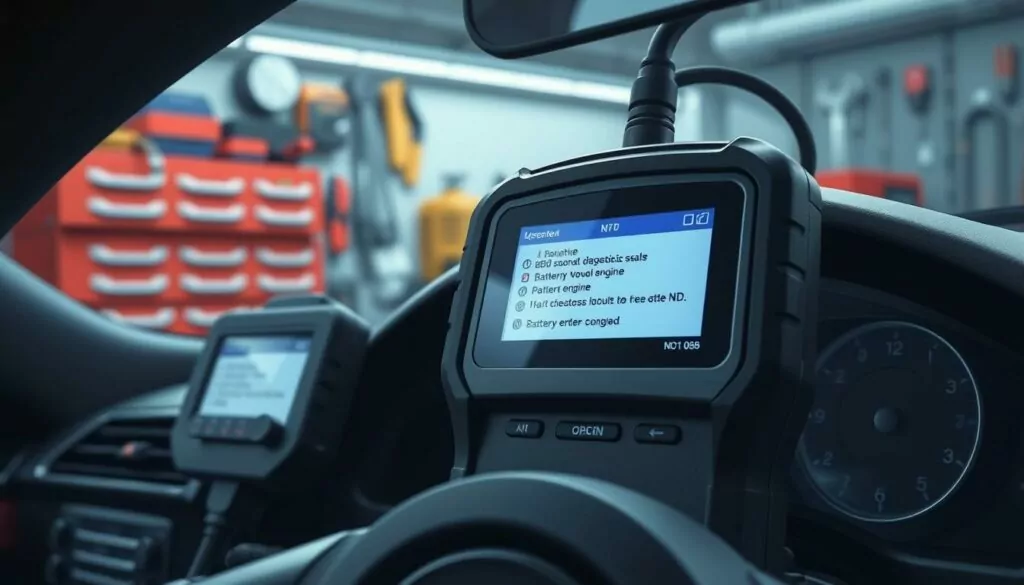
OBD2 scanners are key for car diagnostics, but users sometimes face problems. Issues like connection troubles and reading error codes can slow down the diagnostic process. Knowing how to solve these problems can make diagnostics smoother and more efficient.
Connection Problems
One big issue with OBD2 scanners is not connecting to the car’s port. This might be due to a bad port, the wrong scanner, or a blown fuse. First, check if the OBD2 port is okay and try reconnecting the scanner. If it doesn’t work, look in the car’s manual or get help from a pro.
Difficulty Reading Codes
Some users struggle to read and understand error codes. This could be because the codes are unclear or the scanner can’t reach certain systems. To fix this, learn about the DTC system and use resources with code explanations. Also, pick a scanner that can do more advanced diagnostics.
Incompatibility with Specific Vehicle Systems
Some scanners don’t work with certain cars, causing compatibility issues. This is a big problem for complex systems. Make sure the scanner fits your car’s make, model, and year. Check the scanner’s specs and ask the maker or a pro for help if needed.
| Scanner Model | Key Features | Price Range |
|---|---|---|
| Autel AutoLink AL319 | Basic features, affordable price | $30 – $50 |
| BlueDriver Bluetooth Professional OBDII Scan Tool | Advanced diagnostic capabilities | $100 – $150 |
| Innova 3160g Pro Diagnostic Scanner | Professional-grade features, multiple functions | $150 – $200 |
Knowing about common OBD2 scanner problems helps users fix issues faster. Regular scans and keeping software up-to-date can also find hidden problems.
Success with OBD2 scanners comes from knowing your stuff, being patient, and trying different solutions. With the right strategy, you can solve tough problems and keep your car running well.
How to Interpret Live Data from OBD2 Scanners
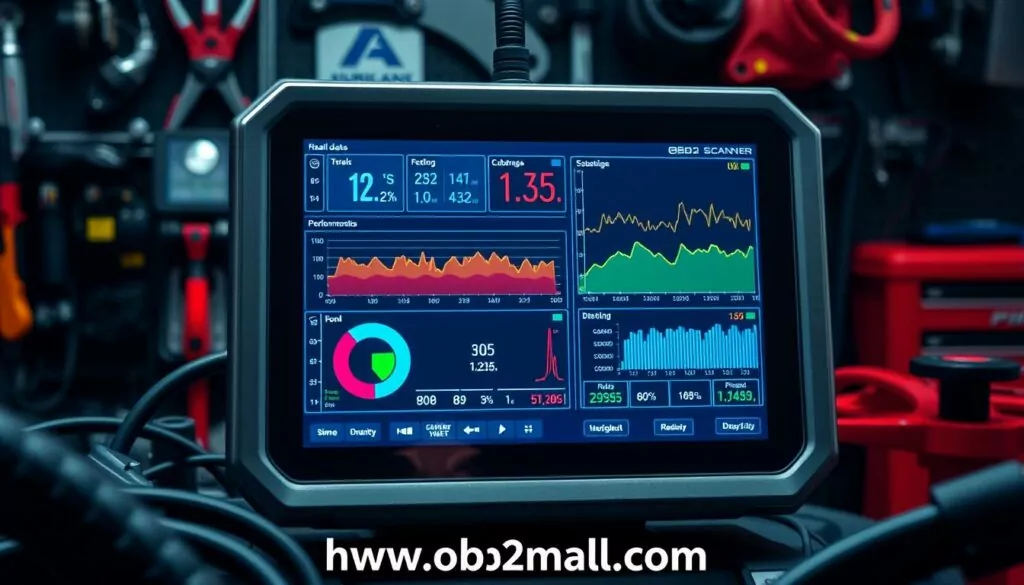
Using an OBD2 scanner is more than just checking codes. It lets you see live data from your car’s systems. This gives you key insights into how well your car is running. You can see engine RPM, speed, and more in real-time.
Knowing how to read this data is important. It helps both car owners and mechanics understand their vehicles better.
Understanding Key Parameters
When you look at OBD2 data, there are important things to watch. Short Term Fuel Trim should be between -5% and +5%. Long Term Fuel Trim should also be in this range.
Engine Coolant Temperature should be between 70-105 °C. This keeps the engine running smoothly. Throttle Position should be between 0-100% for best performance.
Oxygen Sensor Bank 1 Sensor 1 should read between 0.1-0.9V. This shows the sensor is working right.
Monitoring Vehicle Health
OBD2 data gives a full picture of your car’s health. Catalyst Temperature should be between 200-800 °C. Alternator Voltage should be between 13.5-14.5V for good charging.
Battery Voltage should be 12.4-12.8V when the engine is off. Transmission Fluid Temperature should be between 80°C to 105°C for proper function.
Identifying Possible Problems
Watching OBD2 data closely can help spot problems early. Issues with Short Term and Long Term Fuel Trim might mean fuel system problems. Coolant temperature outside the range could mean cooling system issues.
Checking Throttle Position, Engine Load, and Air/Fuel mixture can tell you about engine health. Knowing how to read OBD2 data helps you fix problems before they get worse.
Using OBD2 data helps you keep your car in top shape. It’s great for DIY fans and pros alike.
The Role of OBD2 Scanners in Predictive Maintenance
OBD2 technology has changed how we maintain and diagnose vehicles. Tools like the ANCEL X7 are key in predictive maintenance. They help spot issues early, before they become big problems. These scanners give insights from a vehicle’s systems, helping with early maintenance.
Using an OBD2 scanner helps find problems early. This means fixing small issues before they turn into big, expensive repairs. It saves money and keeps the vehicle running well.
OBD2 technology is now common in cars made after 1996. This makes it easy to use for many car owners. The ANCEL X7 is easy to use and has advanced features for everyone. It helps keep cars running smoothly, reducing breakdowns.
FAQ
How can OBD2 scanners help with predictive maintenance?
OBD2 scanners are key for predictive maintenance. They help spot problems early, so you can fix them before they get worse. This way, you avoid sudden breakdowns and keep your car running smoothly.
Source Links
How to read OBD live data: Step-by-step guide – https://obdeleven.com/how-to-read-obd-live-data-step-by-step-guide
